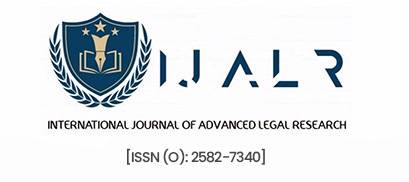ABSTRACT
The definition of copyright has consistently been built around careful negotiation between the two essential categories of protection: moral rights plus economic rights. While economic rights permit creators to sell their works and encourage invention by means of commercial benefits, moral rights protect the author’s personal and eternal link with their work. This research study analyzes the persistent conflict between these two components of copyright law, focusing on the inherent contradiction between artistic integrity and financial exploitation in traditional along with digital domains.
The research starts by providing an examination of the concepts of moral as well as economic rights, reflecting on their theoretical foundations and their implementation in international agreements that include the Berne Convention on Intellectual Property and Trade Related Aspects of Intellectual Property Rights (TRIPS). It investigates how civil law countries promote moral rights, whereas common law countries are familiar with traditionally highlighted economic rights. A comparative legal analysis indicates a fragmented worldwide system, frequently resulting in conflicting protection for writers across nations.
A special focus is placed on the Indian copyright regime, with an examination of legislative provisions and significant cases such as Amarnath Sehgal v. Union of India to determine the manner in which Indian courts have applied and enforced moral rights in the context of economic reasons. The paper also investigates future issues brought by digital technologies, such as AI-generated works, social networking content distribution, as well as the overwhelming power of digital platforms, which usually diminish or override writers’ claims to morality.
The study concludes that, although economic rights generate market value, moral rights provide cultural and personal dignity, both of which are necessary for sustaining an equitable and sustainable copyright environment. The study demonstrates a harmonized legal strategy that seeks a sophisticated relationship informed by changing socio-technological circumstances.
Keywords: Intellectual property, Economic rights, Moral rights, Author’s rights, copyright.
INTRODUCTION
The most significant component of the law governing intellectual property includes copyright law, which gives authors the only authority to use and distribute their original works. In India, it is essential for protecting different kinds of artistic, theatrical, literary, and musical expressions as well as cinematographic films and sound recordings, while simultaneously maintaining public access to information and knowledge. Indian copyright law, which is governed by the Copyright Act of 1957, has changed to conform to international norms, especially since the 2012 modification which contained clauses from the WIPO Performances and Phonograms Treaty (WPPT) and the WIPO Copyright Treaty (WCT). The purpose of these modifications was to encourage innovation and provide security during the digital era.
The expression of ideas, not the ideas themselves, is safeguarded under copyright. It gives authors the sole moral and financial authority to copy, distribute, perform, and modify their creations. Even while copyright becomes automatic and doesn’t need to be registered, it becomes legally binding as soon as the finished product becomes established in a physical form. Although duration varies depending on the nature of work, the term usually lasts for the author’s lifetime plus 60 years.
The Act includes a variety of important clauses which are necessary to comprehend the extent and use of copyright protection in India. The types of works that are eligible for protection under the copyright are outlined in Section 13 and include sound recordings, cinematograph films, literary, dramatic, musical, and creative works. The sole ownership rights granted to copyright holders—including the ability to reproduce, distribute, perform, as well as modify their works—are specified in Section 14. Ownership rules are addressed in Section 17, which normally grants copyright to the creator unless the work was produced while the employee was employed, in which event the employer may retain the rights.[1]
Unauthorized violations of these exclusive rights constitute copyright infringement. It may be relinquished under the fair use doctrine—limited use for study, criticism, or education—and can be either primary (direct infringement) as well as secondary (facilitating infringement). Civil lawsuits (injunctions, damages), criminal penalties (imprisonment, fines under Section 63), and administrative actions (confiscation of illegal copies) are among the legal remedies available for infringement. Protecting the rights of authors, advancing the public interest, and keeping up with technical advancements are some of the primary objectives for Indian copyright law. In addition to encouraging an innovative and creative culture, this framework guarantees fair access to knowledge in a world that has become growing increasingly digital.
[1] The Legal School, Copyright Law in India: Meaning, History, Objectives, Nature & Copyright Infringement, The Legal School (n.d.), https://thelegalschool.in/blog/copyright-law-in-india.

